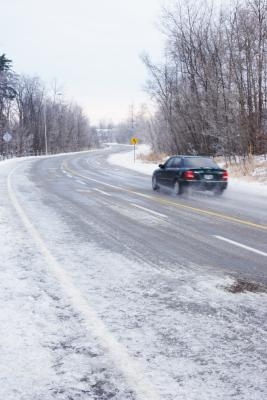
Studded tires are tires with small metal spikes that are designed to grip icy road surfaces. Popular since the 1950s, studded tires are somewhat controversial. They are known to cause heavy damage to road surfaces and as a result are illegal in many areas. On dry roads, studded tires may be more dangerous than nonstudded tires. As technology continues to improve, studded tires may be replaced by better engineered studless tires.
The primary problem associated with studded tires is damage to roads caused by the friction between the studs and the road surface. Studies have shown increased wear between sections of pavement traveled by studded tires and sections of pavement that do not see studded tire traffic. The use of studded tires has been shown to create ruts in the road surface that can lead to increased ice or water on the road surface. The use of studded tires also creates a smoother road surface that may become slippery during inclement weather.

If you are using studded tires to travel on winter roads, be aware that some U.S. states and some foreign countries have outlawed studded tires due to the damage they cause to roads. U.S. states in which studded tire use is presently illegal include Alabama, Hawaii, Illinois, Louisiana, Michigan, Minnesota, Mississippi, Utah and Wisconsin. However in many other states where studded tire use is legal, special restrictions may apply for when studded tires may be used. Some states require a special permit for studded tire use. Foreign countries that have outlawed studded tires include Japan, Germany, Holland and Belgium. If you are considering installing studded tires, first consult your local department of transportation to see what the restrictions are in your area.

While studded tires handle well on icy road surfaces, they have been shown not to perform as well as nonstudded snow tires on non-icy roads. The friction between the metal studs and the road surface may decrease the handling capability of the tires on dry road surfaces. Users of studded tires have also complained about the noise created by the studs on dry road surfaces.

As engineers continue to improve snow tire technology, the studded tire may become a thing of the past. Improved snow tires are shown to handle icy road surfaces as well as studded tires, without all the drawbacks of studded tires. Improved rubber technology gives these new studless tires the ability to grip icy road surfaces as well as traditional studded tires. The longer-wearing tread will last longer than studded tires, which tend to wear down quickly with regular use.
